HESI CHEMISTRY V1 & V2
Document Content and Description Below
HESI CHEMISTRY V1/V2 1. If Hydrogen is in a compound, what would its oxidation number be? 2. What is the oxidation number of any simple ion? 3. How many kilograms are in a pound? 4. What is the t... emperature for freezing point of water in Celsius? 5. What is the conversion of Celsius to Fahrenheit? 6. What is the oxidation number of an element atom? 7. What is the freezing point of sea water in Fahrenheit? 8. How many amino acids are in a dipeptide? 9. If Oxygen is in a compound, what would its oxidation number be? 10. Which of the following pH values would lemon juice likely have? 11. What is a pentose? 12. What is the oxidation state of the Sulfur atom in Sulfuric Acid H2SO4? 13. How many neutrons does carbon 14 have? 14. How many protons does Potassium have? 15. How many amino acids are essential for human life? 16. Normal body temperature in °C? 17. Normal body temperature in °F? 18. Boiling point of water in °C? Boiling point of water in °F? 19. 0°K is equal to ___°C? 20. The term Amphoteric means? 21. What is Kelvin based around? 22. A compound that is a Hydrogen or proton donor, corrosive to metals, causes blue litmus paper to become red and becomes less acidic when mixed with a base is? 23. Mixture of 2 or more metals are? 24. Acids: 25. 3 types of radiation in nuclear chemistry? 26. Alpha radiation: 27. Type of Alloy in which another metal is dissolved in Mercury (Hg)? 28. Proteins are made up of? 29. Glycogen is what kind of starch? 30. When an atom GAINS ONE or more electrons? 31. Basic building block of a molecule? 32. Atomic mass? 33. Atomic #: 34. Base? 35. Key note: 36. Beta radiation: 37. What is Biochemistry? 38. Fahrenheit is based off of? 39. How does ↑ Surface area speed up chemical reactions? 40. How do catalyst accelerate a chemical reaction? 41. What does COOH symbolize? 42. Which of the following is not a solution type? 43. Define Catalyst. 44. What is an atom called when it LOSES 1 or more electrons? 45. What is chemical bonding? 46. What is an Ionic bond? 47. Ionic bonding? 48. Single Covalent bond? 49. What are chemical reactions? 50. Double Covalent bond? 51. Triple Covalent bond? 52. The following is an example of? 53. What is a combustion reaction? 54. What is a compound? 55. Different types of solutions? 56. Strongest type of chemical bond? 57. What is a decomposition reaction? 58. What is Deoxyribose? 59. Attractions between opposite charges of polar moles? 60. What is a Disaccharide? 61. When 2 monosaccharides are joined together this makes? 62. Type of chemical bond that share 2 electron pairs? 63. Example of double replacement? 64. Example of Single replacement? 65. Group of electrons revolving around the nucleus of an atom, or known as a cloudlike group of electrons? 66. Mixtures of matter that readily separate such as water and oil? 67. 3 common temperature systems? 68. Celsius is based around? 69. What is oxidation? 70. What is reduction? 71. Gamma radiation: 72. Unit measure of weight? 73. Basic units of METRIC system? 74. What are Hydrogen bonds? 75. Examples of intermolecular forces? 76. 4 basic ways to speed up a reaction? 77. What are intermolecular forces? 78. Where are nucleic acids, DNA & RNA found? 79. Atoms of the same element but have different numbers of neutrons? 80. Gluconeogenesis is a process that produces? 81. A way to express concentration of atoms? 82. Part of the nucleus of an atom that has no charge? 83. What is the Molarity Formula? 84. Single sugar molecules? 85. How does ↑ concentration cause reaction acceleration? 86. Which is an example of a ionic bond? 87. In a covalent bond compound, if the electrons are shared equally, then the bond is? 88. The study of changes that occur in atomic nuclei? 89. Polar Covalent bond? 90. When 3-6 monosaccharides join together this is called? 91. Emission of particles or energy from an unstable nucleus? 92. Particles that are emitted during radioactivity? 93. Reactant is? 94. A substance that is dissolved in a solution? 95. A homogenous mixture of 2 or more substances? 96. Liquid substance capable of dissolving other substances? 97. Define stoichiometry. 98. Combining parts into a whole is? Or synthesis is? 99. How many electrons does an Oxygen ion have? 100. What is the charge of Potassium (K) in KCl? 101. What is the mass of 1 mole of CO2? 102. How many moles of atoms are present in 2 moles of O2? 103. What characterizes a chemical reaction as combustion? The chemical reaction that is the reaction of a compound with Oxygen? 104. Sum of oxidation # =? 105. Increasing the __ causes the particles to have greater kinetic energy, allowing them to move faster and have a greater chance of reacting. 106. To balance an equation, what is placed in front of each component? 107. Dispersions forces are found in which covalent bond? 108. The weakest of all intermolecular forces? 109. A Dipole attraction is a __ intermolecular force? 110. What is created when an electron pair in a covalent bond is shared unequally? 111. The attractions of one dipole to another is? 112. Strongest bond of intermolecular forces? 113. Elements Flourine (F), Chlorine (Cl ), Oxygen (O) and Nitrogen (N) are involved in which bond? 114. Polarity is? 115. What reactions take place in the nucleus to obtain stable nuclear configurations? 116. Mass # - Atomic # = 117. Protons + Neutrons = 118. # of Protons in an element = 119. Neutral subatomic particles = 120. – charge subatomic particles = 121. + charge subatomic particles = 122. Charge of noble gases? 123. Group IA = 124. Group IIA = 125. Group IIIA = 126. Group VA = 127. Group VIA = 128. Group VIIA = 129. Rows on periodic table: 130. Columns of periodic table: 131. How elements are arranged on the periodic table? 132. Matter that has definite shape & volume? 133. Matter that changes in volume with changes in temperature & pressure? 134. Which change of matter is when no change is made to the chemical composition of a substance? 135. Simplest substance and is represented by a letter or letters? 136. Law that states matter can neither be created nor destroyed during a chemical reaction (but it can change forms)? 137. Law that states energy can neither be created nor destroyed (but it can change forms)? [Show More]
Last updated: 1 year ago
Preview 1 out of 9 pages
Instant download
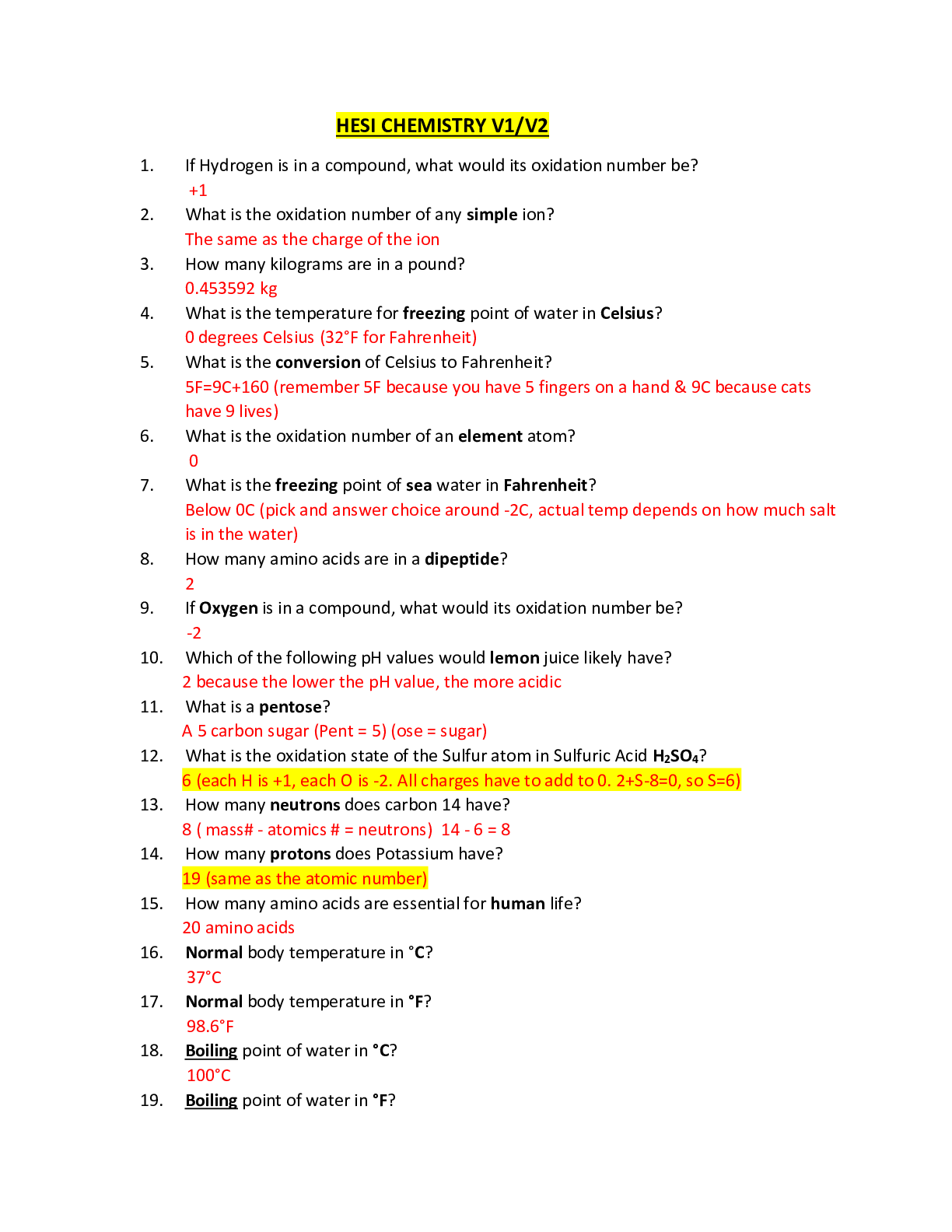
Buy this document to get the full access instantly
Instant Download Access after purchase
Add to cartInstant download
Also available in bundle (1)

HESI A2 FILES (2021)
THIS FILES CONTAINS: CHEMISTRY V1&V2, READING V1&V2,ENTRANCE EXAM,MATH PRACTICE EXAM,BIOLOGY V1&V2, ANATOMY & PHYSIOLOGY,CRITICAL THINKING
By Ajay25 3 years ago
$36
7
Reviews( 0 )
Document information
Connected school, study & course
About the document
Uploaded On
Jan 15, 2021
Number of pages
9
Written in
Additional information
This document has been written for:
Uploaded
Jan 15, 2021
Downloads
0
Views
117

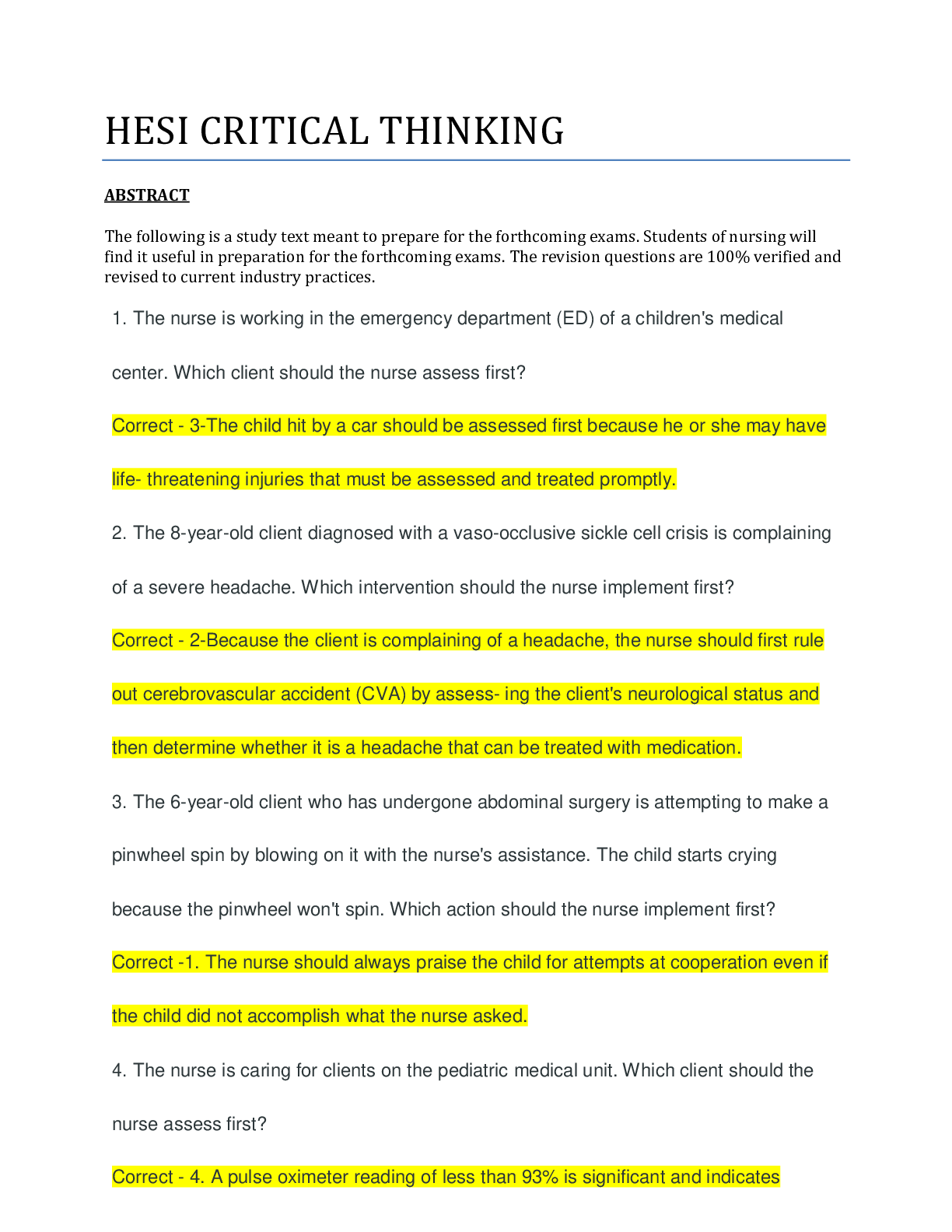

 V1 V2.png)
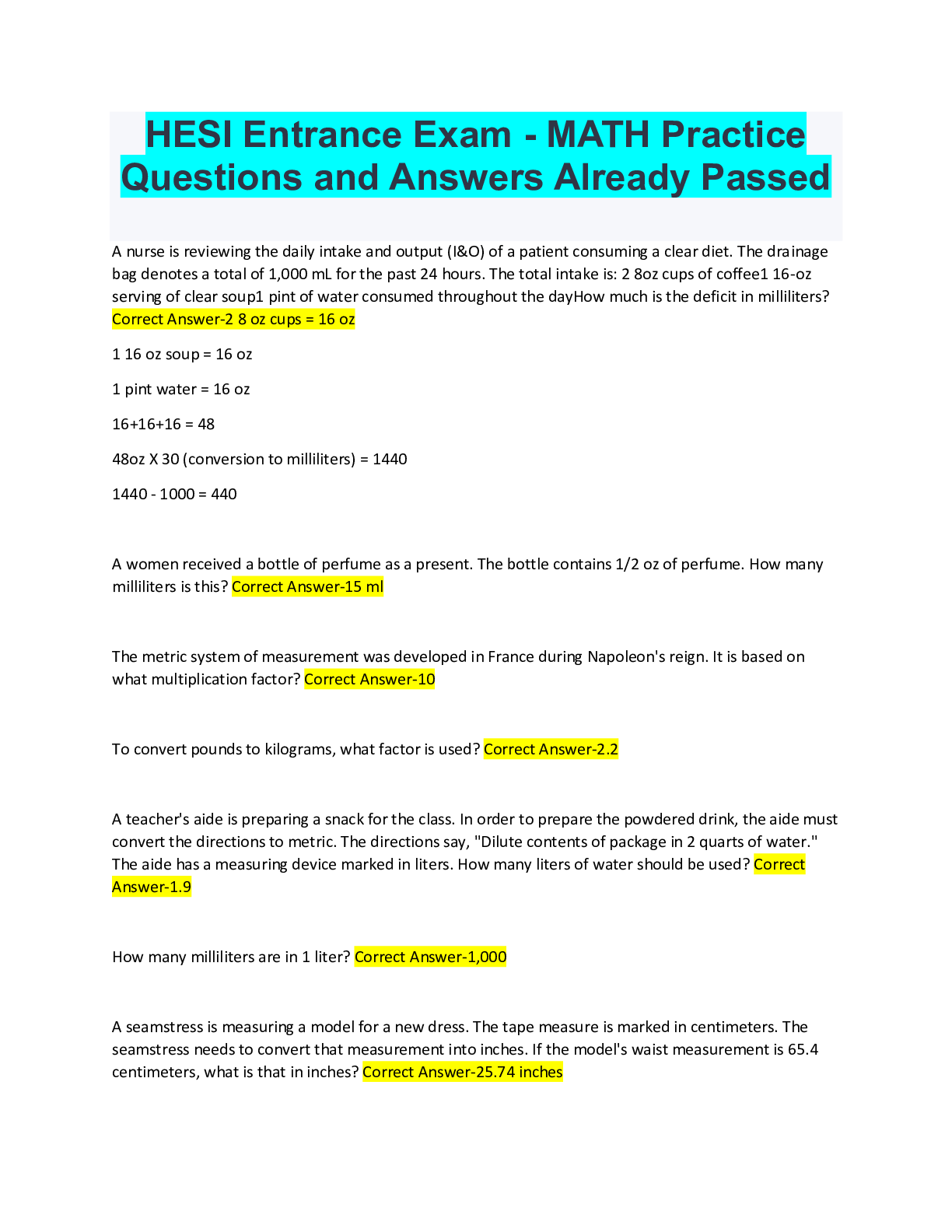
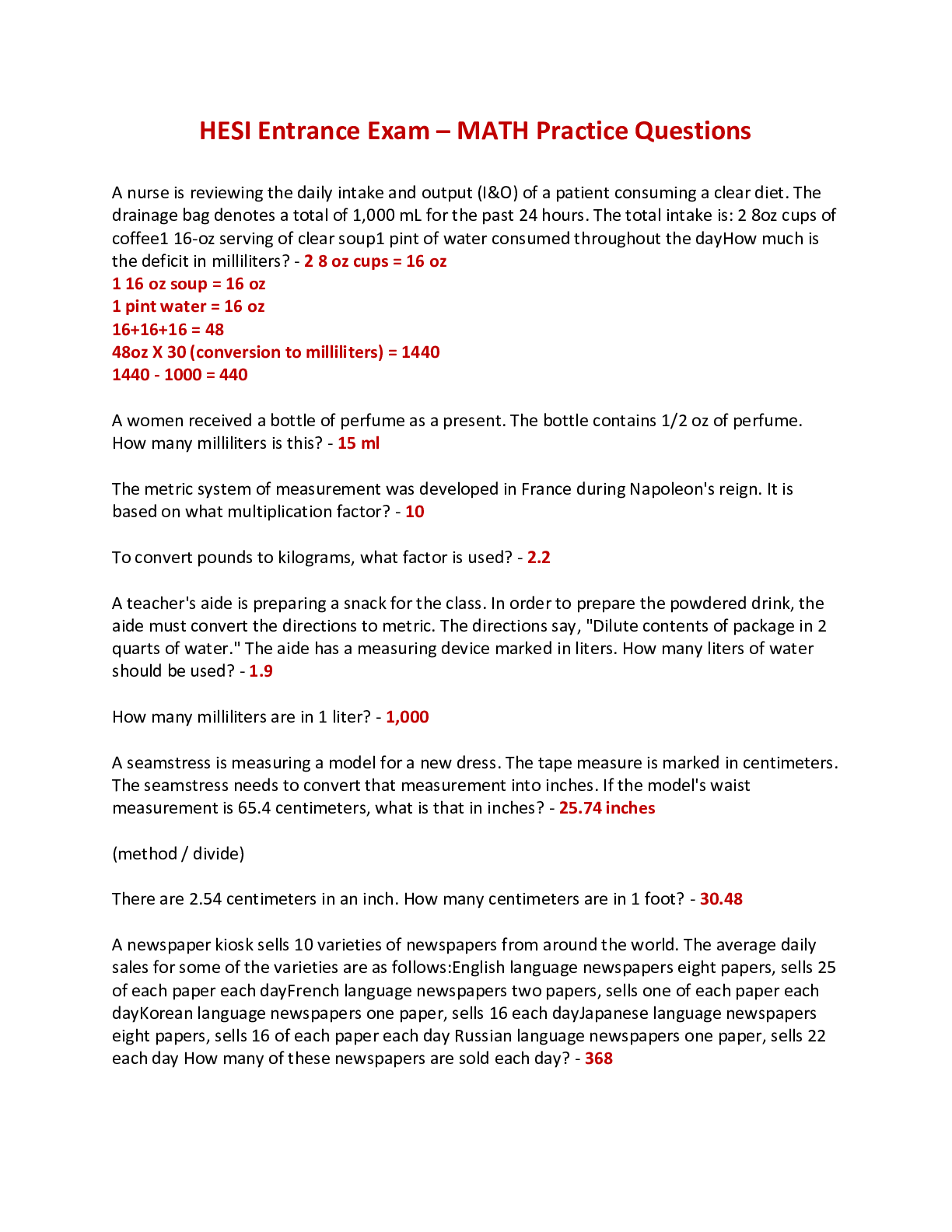
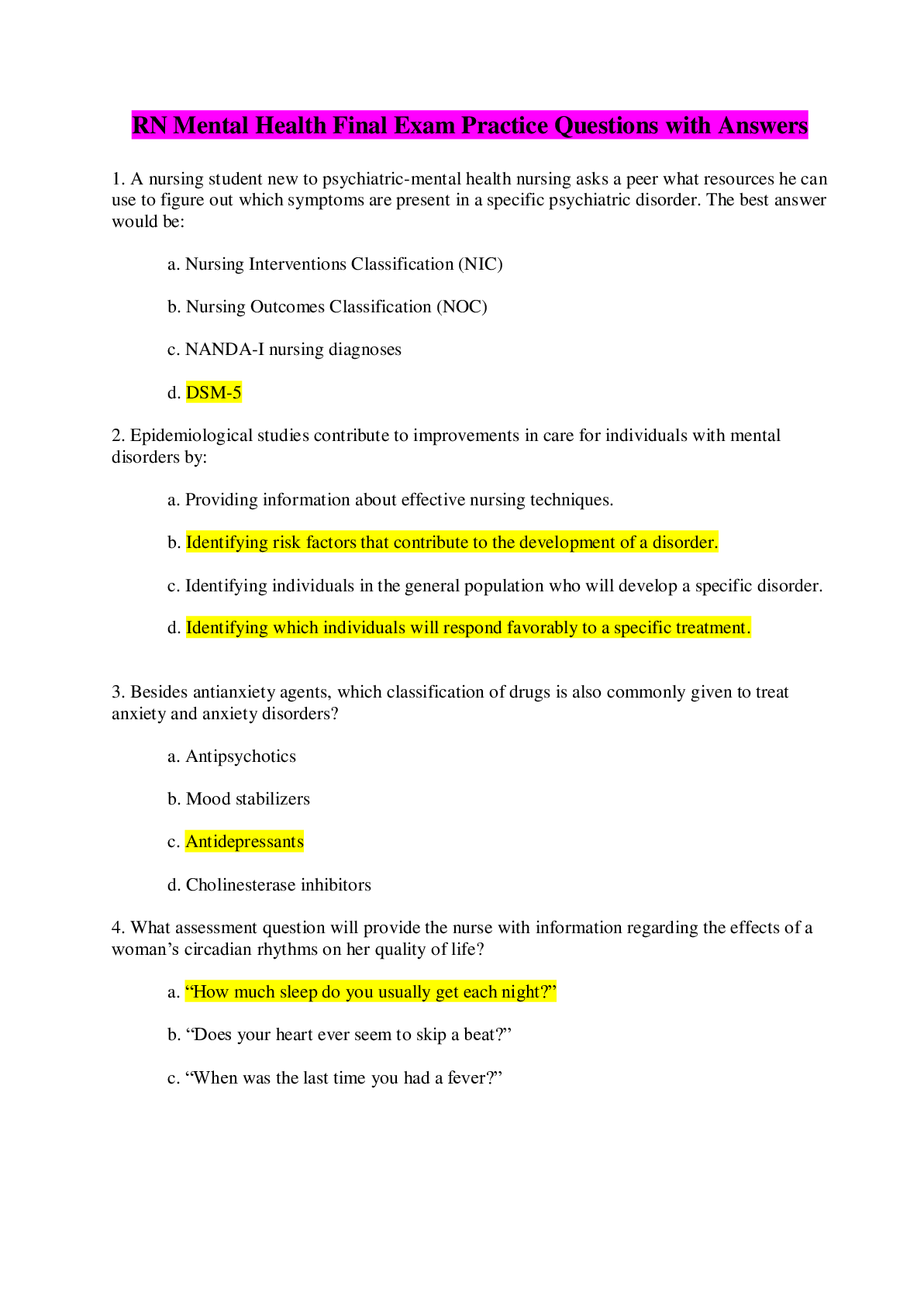
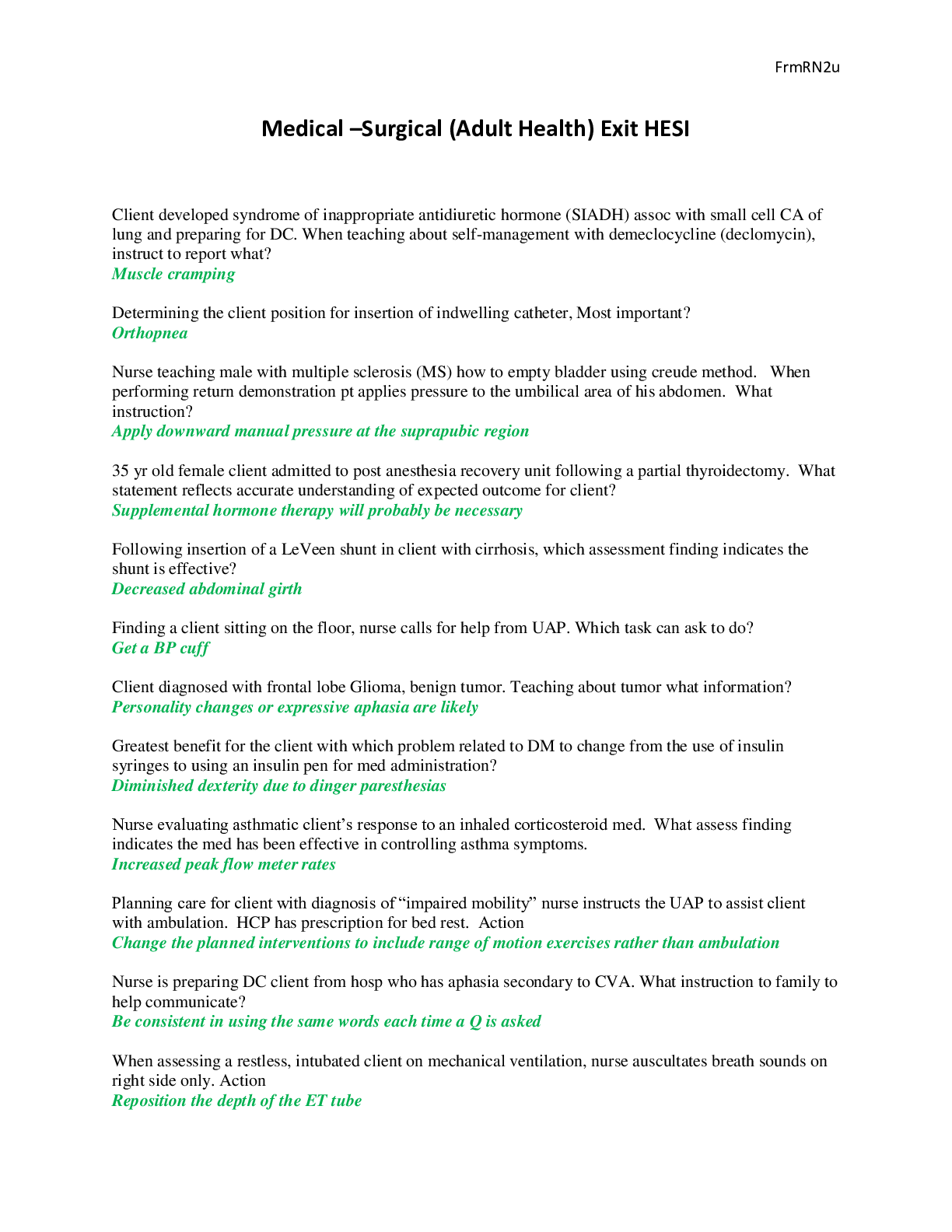
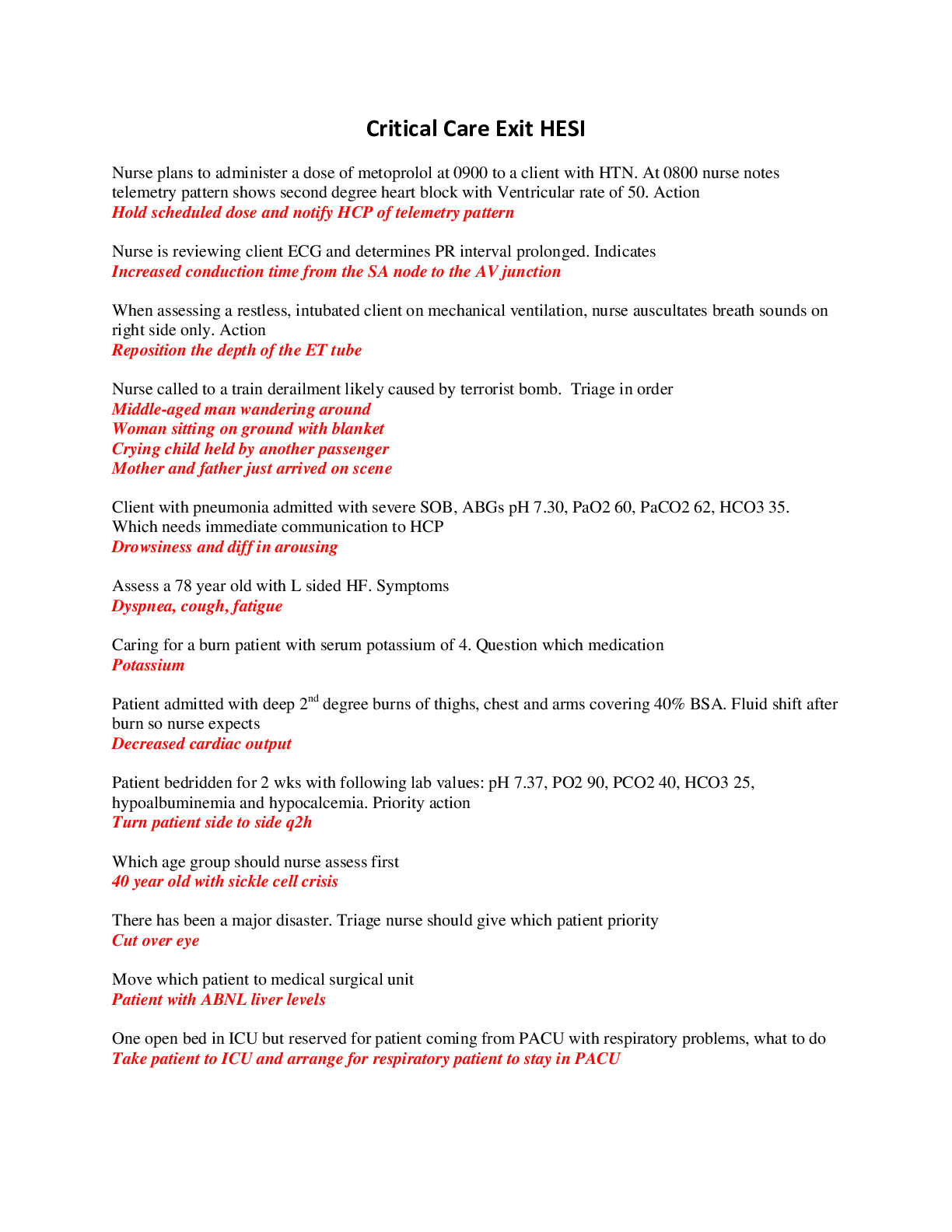





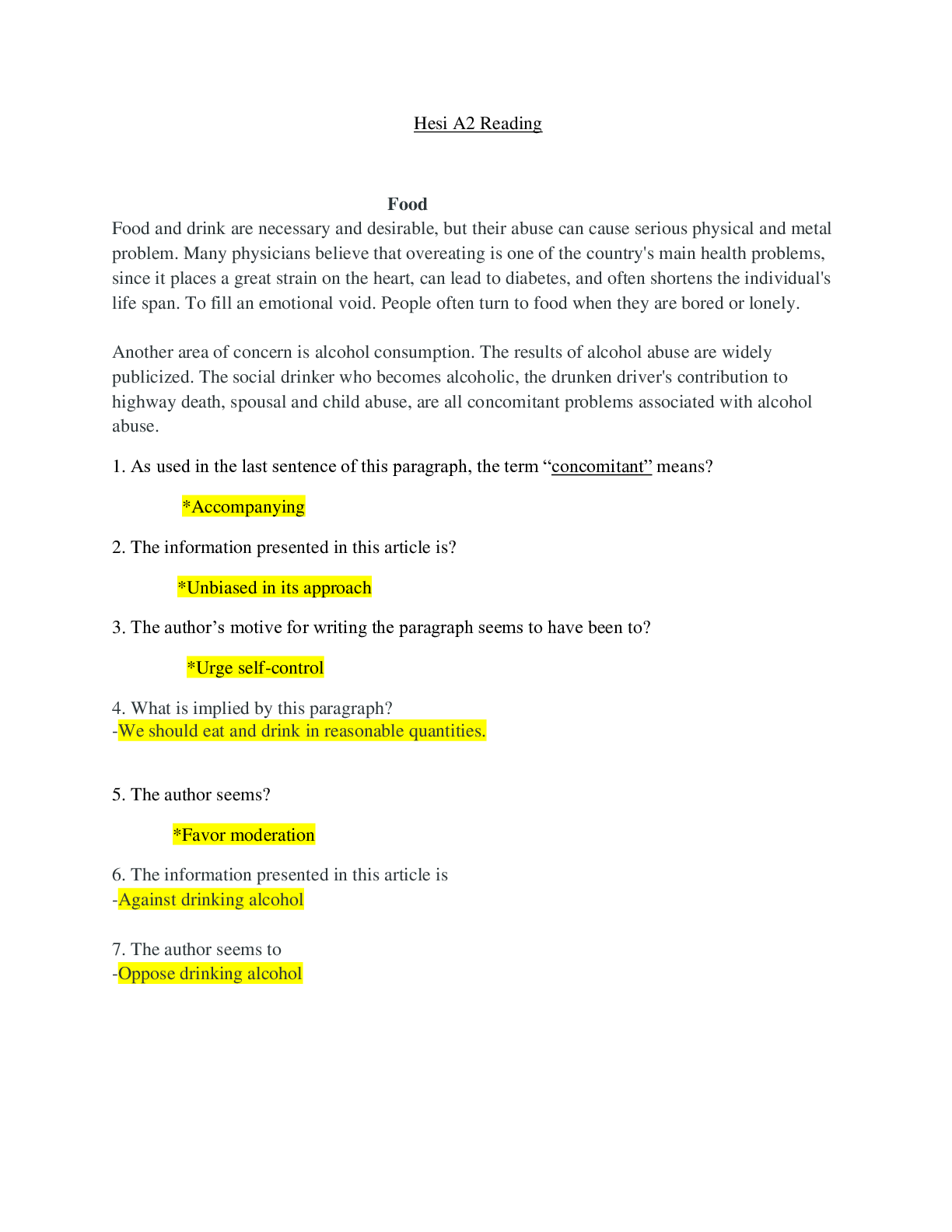

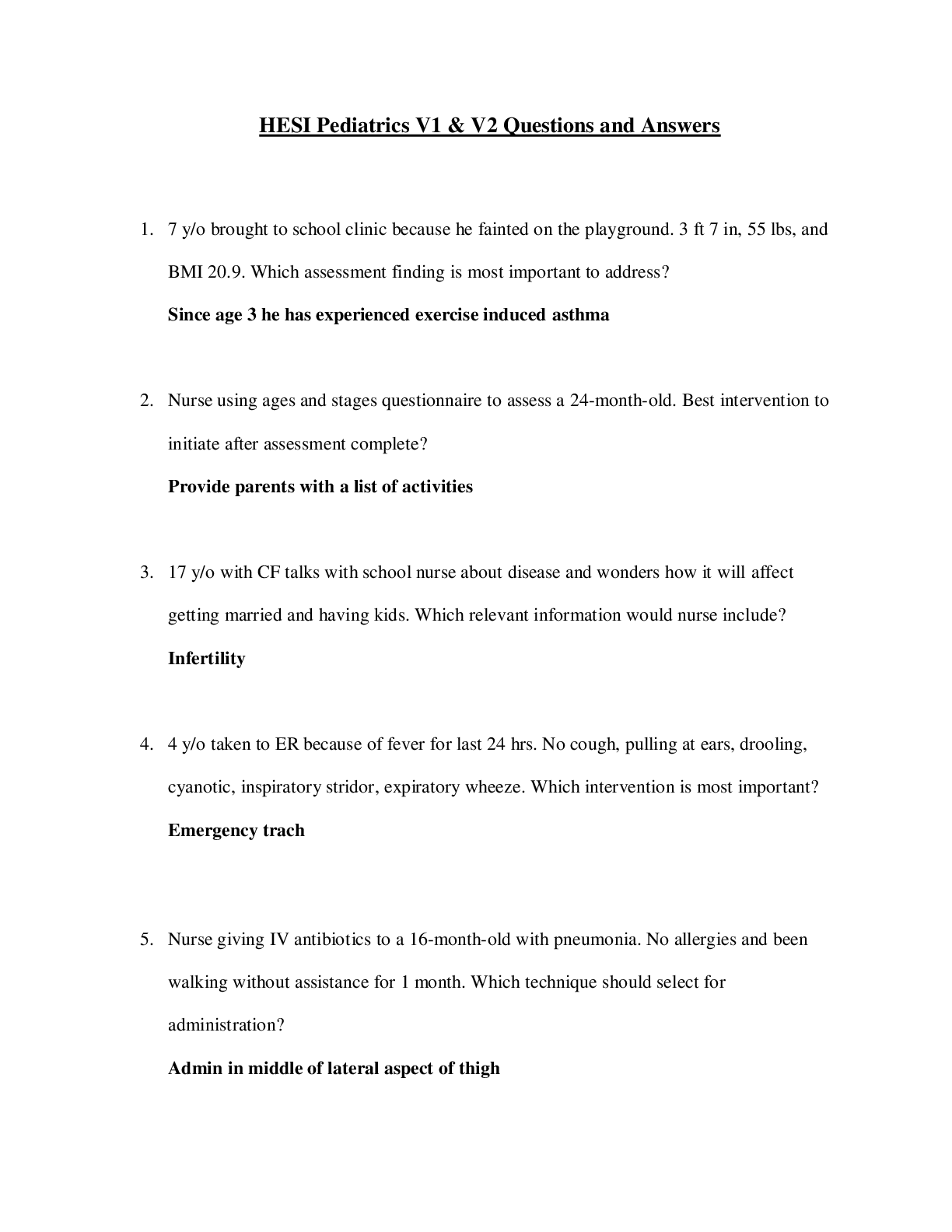


 Exam V1 & V2.png)



 Exam V1 & V2 Brand New Q&A + Actual Pics Included!! A+ Guaranteed!!.png)

